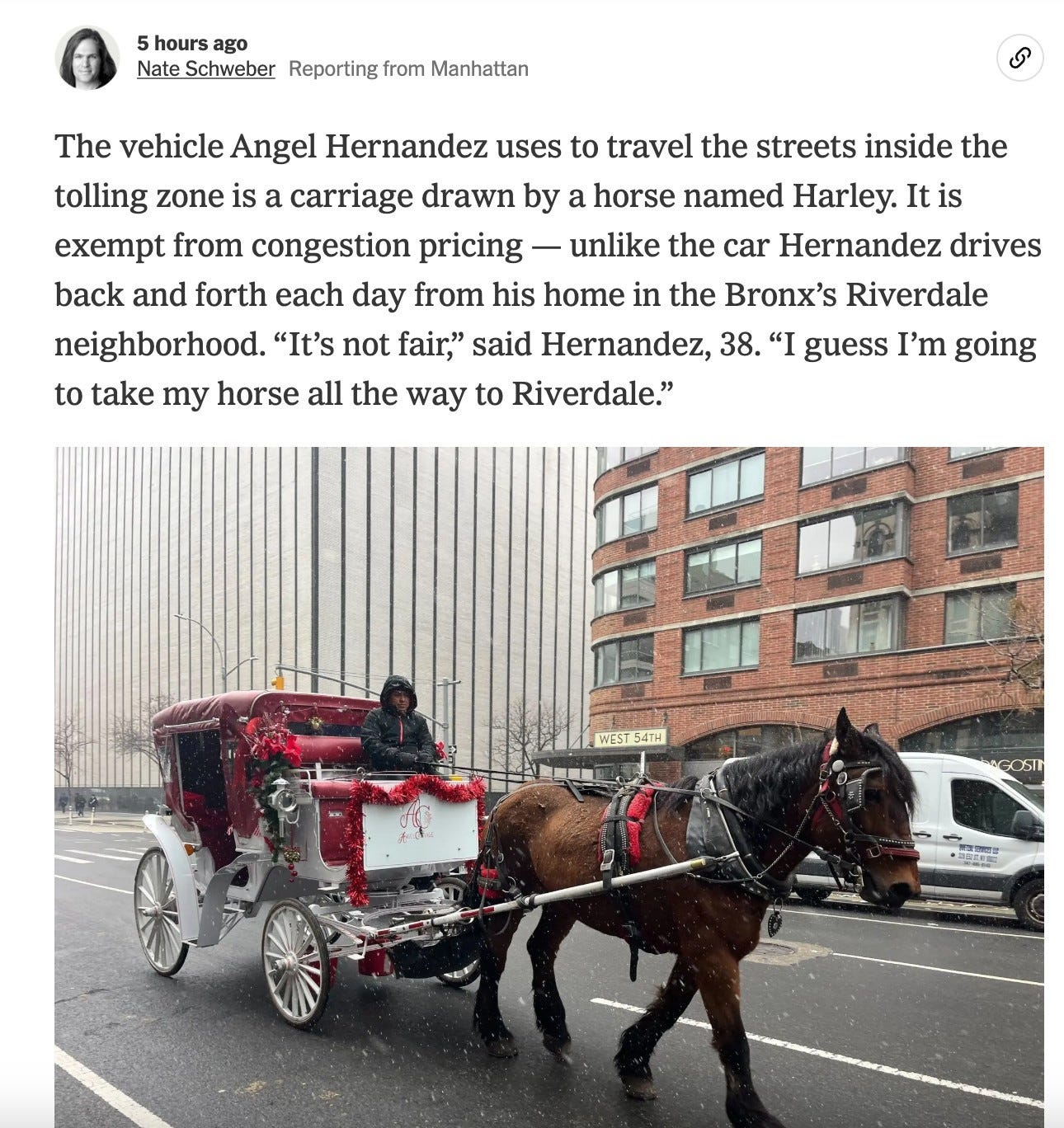Beyond Congestion Pricing
I'm elated that it has begun. But it grinds my gears that NYC has ignored so many options for improving transport—including ones that, unlike congestion pricing (an MTA joint), the city can do itself.
As congestion pricing goes into effect in NYC at last, I’ve posted a new draft article exploring what more could be done. Rather than a criticism of congestion pricing as such, it is intended as a case for more city control over transportation policy. To me both the merits of and the legal room for such a move are compelling, at least in New York City.
Congestion pricing has the unfortunate legal status of being vulnerable to invalidation at multiple levels of government and by multiple branches. It endured numerous legal challenges as well as suspensions by politicians at the state and federal level. This is because of certain legal attributes of the program, including its complexity and interstate nature. Yet as important as congestion pricing is, there are other options for further transportation reform—and some have the virtue of being within New York City’s power to adopt unilaterally. (Congestion pricing is not run by the City, but rather the Metropolitan Transportation Authority, a New York State agency.) These ideas—arguably as ambitious as congestion pricing or more so—are detailed in Part IV of the article.
Here is the abstract. I hope you’ll forgive the plug and take the article for a spin (it’s short by the standards of law reviews!):
Beyond Congestion Pricing (forthcoming in the Michigan Journal of Law and Mobility 2025)
After years of political and legal wrangling, New York City’s congestion pricing program, which charges motorists $9 to enter Manhattan’s core during peak hours, finally went into effect on January 5, 2025. This milestone provides an opportunity to take a broader view of transportation policy in New York.
This Article argues that congestion pricing—though important—has diverted attention from other transformative transportation policies, including many that are within New York City’s authority to implement unilaterally. The pitched battle that preceded the program’s implementation and its uncertain status even today—President-elect Donald Trump has vowed to use federal powers to end it, and legal challenges continue to wend their way through the courts—underscore the importance for U.S. cities of developing policies they can implement without the cooperation of other authorities.
Through analysis of city-state dynamics in transportation policy and application of Mancur Olson’s collective action framework, this Article demonstrates how congestion pricing emerged as an inadequate but attractive solution. It frames the initiative’s challenges and successes as products of the tensions between city and state transportation policy goals and within those polities. It contributes a novel taxonomy of constituencies affected by congestion pricing and identifies benefits and costs to each class of stakeholder. It also proposes a series of actionable transportation policies that New York City could implement independently. These alternative approaches have the virtue of offering meaningful reform without the need for state or regional cooperation. This emphasis is particularly relevant given that officials at the federal and state level often pursue policies that deprioritize—and are sometimes actively hostile to—cities’ transportation needs.
Feedback is welcome (email is best).
And now, as Jon Stewart used to say, here is your moment of zen:





Thank God for President Trump.
New Yorkers know Congestion Pricing is unconstitutional.